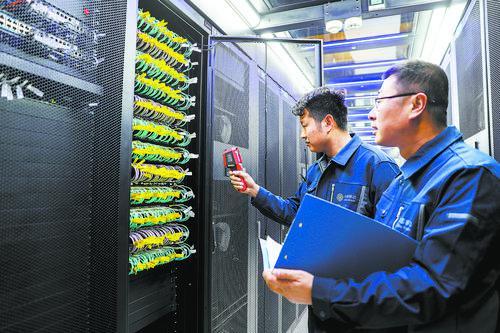New Data Infrastructure Guidelines to Shape Digital Future

China launched a new phase in the development of its data-centric digital infrastructure by setting a target to build a national data infrastructure and operate it by 2029.
The national data infrastructure will provide a range of services from data collection to utilization, including transmission, processing, circulation and security. It will be built in national coordination and have regional, industry- and enterprise-level data facilities.
Vision and phased roadmap
The National Development and Reform Commission, the National Data Administration, and the Ministry of Industry and Information Technology have jointly issued a set of guidelines for constructing the national data infrastructure.
The vision for the future is "integrating massive amount of data, benefiting hundreds of businesses, and showing potential of the digital future."
To achieve this, the guidelines propose a phased approach:
?2024 to 2026: Trials should be conducted on technical pathways, standards unified, and the top-level design finalized.
?2027 to 2028: Infrastructure supporting large-scale data interconnection should be established, creating a system for cross-level, cross-region, cross-department, and cross-business data flow covering major cities.
?By 2029: The national data infrastructure should be completed, forming an efficient, standardized data circulation system to support a robust technological and industrial ecosystem.
Enhancing data circulation and transmission
The guidelines emphasize the importance of creating a systematic data circulation environment that is credible, efficient, interconnected and secure. This will facilitate rapid and orderly data sharing between different organizations and industries, accurately matching supply and demand.
Special attention should be given to innovative applications in sectors like e-commerce, financial payments, and cross-border logistics, ensuring compliance with laws, ethics, and privacy protection.
Building high-speed data transmission networks is another key task. These networks will support critical scenarios such as digital finance, smart healthcare, transportation logistics, and large language model training.
In addition, transmission costs should be reduced, and data exchange performance should be enhanced.
Advancing network innovation and ecosystem growth
New computing resources should be concentrated at key national nodes and a platform should be established to monitor and coordinate the computing network. A collaborative strategy will redistribute non-low-latency services from the eastern to the western regions, optimizing resource allocation and reducing costs.
China also plans to upgrade its 5G network to the 5G-A level and accelerate research and innovation in 6G technology. The 5G-A network has faster speed, lower latency, greater connectivity, and reduced energy consumption. It will have a peak download rate of 10 gigabits per second and upload speed of one gigabit per second, along with millisecond-level latency and low-cost Internet of Things connectivity.
Attracting more investment
Besides setting clear goals and implementation paths, the guidelines also highlight the dual role of the government and market, encouraging bold innovation and technology application. This will lay the foundation for a high-speed, open, inclusive, and secure national data infrastructure.
According to preliminary estimates from the industry, data infrastructure will attract direct investments of approximately 400 billion RMB annually, driving an investment scale of about two trillion RMB over the next five years.
To advance this transformative initiative, the relevant departments will coordinate efforts to ensure that policy, technology, standardization, and talent resources are in place.






